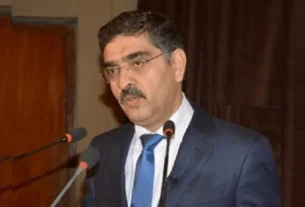Yoga was developed by the Indus-Saraswati civilization in Northern India over 5,000 years ago. The word Yoga was first mentioned in the oldest sacred texts, the Rig Veda. The Vedas were a collection of texts containing songs, mantras and rituals to be used by Brahmans, the Vedic priests.
The word ‘Yoga’ is derived from the Sanskrit root ‘Yuj’, meaning ‘to join’ or ‘to unite’. As per Yogic scriptures, the practice of Yoga leads to the union of Individual Consciousness with that of the Universal Consciousness, indicating a perfect harmony between the mind & body, and Man & Nature.
Today, more than 200 million people in over 200 countries practise Yoga.
Recognizing its universal appeal, on December 11, 2014, the UN proclaimed June 21 as the International Day of Yoga by resolution 69/131.
Many would not know that Lord Shiva is considered the Adi Yogi, that is the father and founder of Yoga. He is the foremost among the Yogis and the first teacher of the science of Yoga. He is the representation of flawless meditation and spirituality. His meditating and Yogic energies are so high that he controls the entire functioning of the universe in his subconscious mind.
Lord Shiva, being a Yogi, is also called, Adinatha, Maha Yogi, Yogeshwara, and the greatest Yogi whose all forms of Yoga impact body, energy, mind, emotion, and cosmic intelligence.
Lord Shiva first initiated Yoga Chaturtha – Hatha Yoga (Body Purity/Power), Mantra Yoga (Mind Purity/power), Laya Yoga (Body Rhythm/speed), and Raja Yoga/Dhyana Yoga (Eternal/supreme Consciousness).
Lord Shiva is also the source of all mantras, so his one creation is also Mantra Yoga. He is himself Omkara, the primordial cosmic divine sound. Lord Shiva is also the supreme source – Lord of Dhyana (meditation).
The Shastras say that Lord Shiva first imparted his knowledge on Yoga and meditation to his wife, Goddess Parvati.
One night when Lord Shiva, for the first time, shared the secrets of Yoga to Goddess Parvati, he became the Adi Guru of Yoga. He taught Goddess Parvati 84 asanas of Yoga which belong to the Vedic Parampara. These 84 asanas have the power to give the person the best of the Rajyoga. Basically, these Yogic positions eradicate the doshas in a person’s life and confer their most auspicious results. This enables the person to remain healthy, wealthy, happy and successful.
It is also believed that Lord Shiva never wanted to share these Yogic secrets with anyone else except Goddess Parvati. However, Goddess Parvati being the symbol of care and affection, could not take the sufferings of the people and wanted to share this miraculous secret with them. She believed that the introduction of Vedic Yoga in a proper manner will rectify many miseries of the world. Lord Shiva thought that mankind did not have the understanding to respect these cosmic powers, but he was persuaded otherwise by Goddess Parvati.
Then came the creation of the Sapt Rishis, who were trained and prepared to spread it further. Lord Shiva himself took the initiative and made the Rishis attain 18 Siddhas. These 18 siddhas imparted the divine knowledge to mankind. It is believed that this teaching of the Sapt Rishis happened on the banks of Kanti Sarovar, near Kedarnath.
Though Yoga was being practised in the pre-Vedic period, the great Sage Maharshi Patanjali, also known as the father of modern Yoga, systematized and codified the then existing practices of Yoga, its meaning, and its related knowledge through his Yoga Sutras. Patanjali Yoga Sutra has a collection of 196 verses or sutras on Yoga.
After Sage Maharshi Patanjali, many sages and Yoga Masters contributed greatly for the preservation and development of the field through their well-documented practices and literature.
Paramahansa Yogananda was an Indian Yogi who taught Kriya Yoga to millions around the world. BKS Iyengar was considered to be the foremost of the modern yoga teachers.
The UN has derived the theme of International Yoga Day 2020 as “Yoga at Home and Yoga with Family”, taking into cognizance the Covid-19 pandemic. The World Health Organization mentions Yoga as a means to improve health in its global action plan on physical activity 2018-2030: More active people for a healthier world. UNICEF says kids can practise many Yoga poses without any risk and get the same benefits that adults do. These benefits include increased flexibility and fitness, mindfulness and relaxation.
Being in the corporate world, if we decide to take out just 15 minutes daily to practise ‘Dhyana Yoga’, our stress and anxiety levels will substantially reduce and our output and productivity will significantly improve. It is just about 15 minutes, at home and with the family – Yoga Time.


